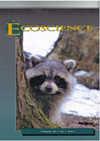轮虫对食物中氮不平衡的生态反应:从生活史策略和饲养行为的实验观察
IF 1.3
4区 环境科学与生态学
Q3 ECOLOGY
引用次数: 0
摘要
生态系统中的氮(N)循环已被人类活动过度平衡。然而,无论供应的变化是否导致浮游植物元素组成的变化,从而影响浮游动物的生命史战略,这仍然是不确定的。为了调查这些影响,建立了一个简单的基于实验室的食品链。结果表明,缺乏或过量氮会降低藻类密度、细胞体积、生长率和叶绿素含量。此外,藻类中的N含量随着介质中N浓度的增加而显著增加,并在浓度≥5 mg·L–1时达到饱和。在低氮或无氮介质中生长的藻类饲料导致轮虫的年龄特异性存活率更快下降,种群增长缓慢,世代时间更长。为了弥补营养不足,增加了脂肪和过滤率。另一方面,在高N介质(A50和A200)中生长的藻类上喂食的旋转体在孵化时的平均寿命和预期寿命显著缩短。因此,氮不平衡对食物链中两种主要生产者和食草动物浮游动物的生长、发育和繁殖产生不利影响。生态系统中的氮循环受到人类活动的影响,但不确定这是否会导致浮游植物元素组成的变化,从而导致浮游动物生命周期的变化。为了研究这些影响,在实验室中建立了一个简单的食物链。结果表明,氮的缺乏或过量会降低藻类的密度、细胞体积、生长速率和叶绿素含量。此外,藻类氮含量随着培养基氮浓度的增加而显著增加,在浓度≥5 mg·L–1时达到饱和。以生长在低氮或无氮环境中的藻类为食的轮虫存活率下降更快,种群生长较慢,世代延长。为了弥补营养不足,放牧和过滤率增加。另一方面,以高氮环境(A50和A200)中生长的藻类为食的轮虫的平均寿命和预期寿命显著缩短。因此,氮循环失衡对食物链中初级生产者和食草动物浮游动物的生长、发育和繁殖产生不利影响。本文章由计算机程序翻译,如有差异,请以英文原文为准。
Ecological Response of Rotaria rotatoria (Bdelloid Rotifera) to Unbalanced Nitrogen in Food: Experimental Insights from Life History Strategy and Feeding Behavior
ABSTRACT Nitrogen (N) cycle in ecosystems has been overbalanced by human activities. However, it remains uncertain whether the altered N supply results in a change in the elemental composition of phytoplankton and, consequently, affects the life history strategy of zooplankton. To investigate these impacts, a simple lab-based food chain was established. Results show that lack or excess of nitrogen reduced algal density, cell volume, growth rate and chlorophyll content. Moreover, N content in algae significantly increased with increased N concentration in the medium, and reached saturation at concentrations ≥5 mg·L–1. Feeding on algae grown in a low-nitrogen or no nitrogen mediums resulted in faster decline in age-specific survival of rotifers, and slower population growth, as well as longer generation time. In order to make up for nutritional shortage, grazing and filtration rates increased. On the other hand, rotifers feeding on algae grown in high-N mediums (A50 and A200) had significantly shorter average lifespan and life expectancy at hatching. Therefore, nitrogen imbalances have adverse effects on the growth, development and reproduction of both primary producers and herbivorous zooplankton in the food chain. RÉSUMÉ Le cycle de l'azote dans les écosystèmes est affecté par les activités humaines, mais il est incertain s'il en résulte une modification de la composition élémentaire du phytoplancton et, conséquemment, du cycle vital du zooplancton. Pour étudier ces effets, une chaîne alimentaire simple a été établie en laboratoire. Les résultats montrent qu'une carence ou un excès d'azote réduit la densité, le volume cellulaire, le taux de croissance et le contenu en chlorophylle des algues. De plus, le contenu en azote des algues augmente significativement avec l'augmentation de la concentration en azote du milieu, pour atteindre la saturation à des concentrations ≥5 mg·L–1. Les rotifères se nourrissant d'algues ayant poussé dans un milieu pauvre en azote ou sans azote affichent un déclin plus rapide de leur taux de survie, une croissance populationnelle plus lente et un allongement de la durée des générations. Afin de compenser la carence nutritionnelle, les taux de broutement et de filtration augmentent. D'un autre côté, les rotifères se nourrissant d'algues ayant poussé dans des milieux riches en azote (A50 et A200) ont des durées de vie moyennes et des espérances de vie significativement plus courtes. Par conséquent, les déséquilibres du cycle de l'azote ont des effets délétères sur la croissance, le développement et la reproduction des producteurs primaires et du zooplancton herbivore dans la chaîne alimentaire.
求助全文
通过发布文献求助,成功后即可免费获取论文全文。
去求助
来源期刊

Ecoscience
环境科学-生态学
CiteScore
2.80
自引率
0.00%
发文量
13
审稿时长
>36 weeks
期刊介绍:
Écoscience, is a multidisciplinary journal that covers all aspects of ecology. The journal welcomes submissions in English or French and publishes original work focusing on patterns and processes at various temporal and spatial scales across different levels of biological organization. Articles include original research, brief communications and reviews.
 求助内容:
求助内容: 应助结果提醒方式:
应助结果提醒方式:


